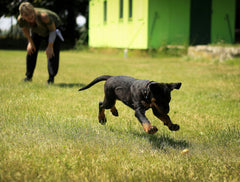
If you are trying to get a pet that is small, but fun to care for, you may want to check into a fat-tailed gerbil.
Don't confuse it with a hamster or a guinea pig though! There are many things that you can learn about this type of pet to see if it is right for you and your family.
Habitat for a Fat-Tailed Gerbil

A gerbil fat tail is one name for a fat-tailed gerbil. These gerbils are generally found in sandy areas with a lot of vegetation. In the wild, they are normally found in the Meditteranean desert, also known as the rocky desert. They can sometimes be found in coastal plains, as well. They love to burrow deep into the ground. With this being said, many people are deciding to get a fat-tailed gerbil as a pet.
Physical Characteristics of a Gerbil Fat Tail

If you are interested in getting a gerbil fat tail, you might want to know more about their physical characteristics so you won't confuse them with hamsters. The fur on these gerbils is fluffy and long. Many people will describe a fat-tailed gerbil as rounded with oval, large eyes with pink-colored ears.
Their color will vary. However, most of these gerbils are either tan or gray. They may also have some black on them, as well. With this being said, depending on the subspecies, they could be other colors. Many fat-tailed gerbils do have white feet and bellies.
The soles and palms of the feet usually have some hair on them. The ears may have a bit of hair, too. The tail on a fat-tailed gerbil will look much different than what other species of gerbils have. Their tails are not as long as their body. In addition, the tail is thicker than other gerbils. The function of their tail is to store water and fat. If their tail is too skinny, it probably means they aren’t getting enough nutrients or food.
Most adult fat-tailed gerbils are approximately 108 mm long from head to tail. They usually weigh around 36.5 grams.
A fat-tailed gerbil will have a skull that is elongated.
Their upper incisors are mostly grooved. This allows them to chew on things much better. They have rooted molars that allow for a better bite. Healthy teeth in a gerbil are important. If you get a fat-tailed gerbil and they don’t have healthy teeth, this can lead to other health issues.
Lifespan of a Mongolian and Fat-Tailed Gerbil

If you are going to have a Mongolian or fat-tailed gerbil as a pet, if they are kept healthy, they will live to be around 5-7 years. However, most wild fat-tailed gerbils won’t live this long. Keep in mind that the healthier the gerbil is throughout their life, the longer they could possibly live.
Behaviors of Fat-Tailed Gerbils
In the wild, most of the fat-tailed gerbils are quite docile. When they are kept as a pet, they won’t usually try to escape and they bite only when very scared. With this being said, if they are kept in a cage with other fat-tailed gerbils, they will likely become aggressive and even try to eat the other gerbil. If you have a female that is pregnant and gives birth, you should keep a close eye on them. They often eat their babies.
This type of gerbil is nocturnal. When living in the wild, a fat-tailed gerbil will be most active around dusk and might be somewhat active during the night and day. As a pet, a fat-tailed gerbil is not usually active for very long at one time. They might be active for a little bit, then sleep, and then become active again.
Most fat-tailed gerbils are quite social with humans, but they don’t prefer to live with other gerbils.
Nutritional Requirements for Fat-Tailed Gerbils
It is important to make sure you are properly feeding a fat-tailed gerbil if you get one as a pet. They mostly like to eat insects and plants. Some of the things that you will want to feed them include mealworms, beetles, crickets, vegetables, grain, and sometimes, pieces of small meat.
Human Interactions
Humans can have fat-tailed gerbils as pets. These gerbils are quite docile. They aren’t too difficult to take care of and they will usually get along with their owners. Many fat-tailed gerbil owners say their gerbils loved to be played with.
Price of Fat-Tailed Gerbil
In addition to all of the above information, you may also want to know the fat-tailed gerbil price. Depending on where you get the fat-tailed gerbil and what age you get them at, the price can vary. However, most people are able to get this type of gerbil for around $20 to $40.
Now that you know more about fat-tailed gerbils, you can decide if it is a pet that you would like to get. Remember, they often won’t do that great with other fat-tailed gerbils, so you should only get one of them. However, they do interact quite well with humans.
Is there a fat-tailed gerbil?
What is the fat-tailed gerbil lifespan?
What is the fat-tailed gerbil origin?
Check out our blog and follow me on LinkedIn to stay up-to-date!




